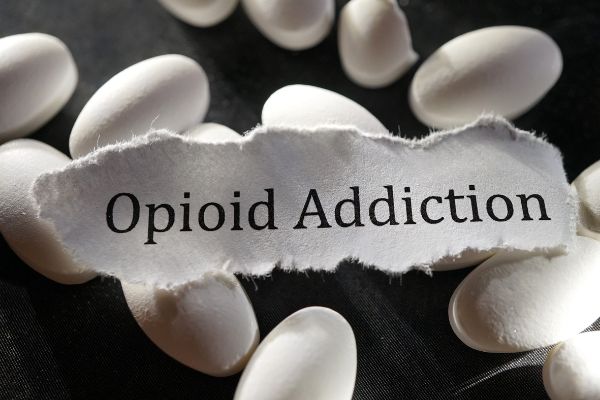College is the modern rite of passage for young adults, representing new beginnings, finding your identity, meeting new people, and taking on new experiences. So many things come to mind when we think of college, like college parties.
The party scene is so prevalent among students that we have begun normalizing the “sink or swim” and “drink until you pass out” mottos. Unfortunately, this way of thinking is almost just as dangerous as alcohol itself.
When You Don’t Think You Have A Problem
Alcohol can undoubtedly inhibit our judgment and decision-making skills. According to a recent study, 60% of college students admit to binge drinking in the last seven days. Binge drinking is the consumption of an excessive amount of alcohol in a short period.
Creating dangerous habits with alcohol can lead to a decline in your academics, put you in hazardous situations, and risk your health overall.
However, we don’t see our drinking behavior as a problem if everyone is doing the same thing. In a sense, we have normalized and even enabled the drinking culture in college. Perhaps you are starting to recognize your habits with alcohol as detrimental, but not as an addiction. Programs like AA are incredibly effective in making a lifestyle change.
Losing The Stigma
A dark shadow seemingly follows when you hear “AA.” The shadow of the doubt might be saying not me; I’m not an alcoholic. Or, what will others think when they hear that I’m attending AA meetings? Many students lack familiarity and direct experience with this readily accessible and potentially lifesaving resource.
In a journal posted by the National Library of Medicine, a group of students took an experiential approach to an AA meeting and how it relates to college students. Their results were telling. Upon attending a meeting, they were surprised by “how welcomed they felt, even as they identified themselves as students” and “moved by how open AA members were about sharing their own experiences.”
The authenticity of the meetings is what makes the program so effective. Its raw and organic emotions allow members to connect and guide one another on their journey.
Bookmark These Helpful Tools:
What Are The 12 Steps?
The 12 steps to recovery, developed in 1935 by Bill Wilson and Dr. Bob, are the core of the Alcoholics Anonymous (AA) program. They are guiding principles designed to help members reach the end goal of sobriety. It also teaches members who previously battled addiction to sustain a healthy and fulfilled life. These steps have proven to make the program effective as it hones in on mental, spiritual, and physical goals.
Taking The Next Step
The 12-step recovery program is not limited to one sector or one demographic of society, and the hospitality the students felt in the study is universal across all AA meetings. If the stigma of the meetings is holding you back, trust that a community of 2 million members across 180 nations is waiting to meet you.
Changing your lifestyle can be challenging, especially when most of the college population is complacent in the drinking culture. Or, like many, they fail to recognize they have a drinking problem. Find AA meetings near me.
Invite A Friend
College can be difficult, especially if you’re away from your family and close friends. However, it’s also an excellent opportunity to meet new people and make lifelong friendships.
Inviting a friend to an AA meeting might give you that extra support in your journey to recovery. This support friend can also serve as an accountability partner. Find people who want to change with you because birds of a feather flock together for a reason.
Not Ready For Face-to-Face?
There are other options if you’re ready to take the next step but still hesitant to meet face-to-face. First, consider joining a virtual AA meeting. A virtual meeting will allow you to learn more about the 12-step program as you work yourself up to meeting in person. Learn more about online intergroup of Alcoholics Anonymous here.
How To Join an AA Meeting
- Deciding to seek help is the first and more important step.
- Find AA meetings near me.
- No need to call, make an appointment, or pay anything. Just show up!
- Find a community that fits you! You’re more susceptible to change in a positive and healthy environment. Feel free to try different meetings out to ensure the most impactful experience.
Rising Alcohol-Free Spirits
When you fail to plan, you plan to fail. Keep your college bar stocked with alcohol-free spirits that imitate the flavor without the lingering hangover. Here is a list of the top brands that are leading the way in alcohol-free spirits.
The Road To Recovery
College can be daunting enough with keeping up with grades, attending lectures, and managing your newfound freedom. Use that freedom to choose today to better yourself. You may not think you’re addicted to alcohol, but you agree that it has negatively impacted your life.
Join The Sans Bar National Tour, an alcohol-free pop-up
How often have you missed a class because you’re too hungover to attend? Or do you embarrass yourself in front of others because you drank too much? Or you said something you shouldn’t have because of liquid courage. Nonetheless, there are tangible steps and tools to lead college students into a healthy relationship with alcohol. You can still experience all that college has to offer even while being on the road to recovery.
Related Articles
- What Are the Treatment Methods for Alcohol Addiction?
- What to Expect at an A.A. Meeting
- Why You Can’t Quick-Study The 12-Steps
- 10 Physical and Mental Health Benefits of Sobriety
- The (Alcoholics Anonymous) Resentment Prayer
Related Videos
- The 12 Steps of AA Explained!
- AA Prayers & Meditations
- Alcoholism: The deadly truth about its stigma | Sarah Drage | TEDxFolkestone
Resources:
Strobbe S, Thompson SM, Zucker RA. Teaching college students about Alcoholics Anonymous: an experiential approach. J Addict Nurs. 2013 Jan-Mar;24(1):51-7. doi: 10.1097/JAN.0b013e31828768e4. PMID: 24622530.




![Is Molly [Ecstasy] Addictive?](https://findrecovery.com/wp-content/uploads/2022/02/is-molly-addictive.jpg)


